Fixes: Connect to a Wireless Display Not Showing
Have you ever encountered an issue with the connection to a wireless display not showing on a PC? In this article, we’ll show you several ways help to fix it.
Fixes: Connect to a Wireless Display Not Showing
Screen mirroring your iPhone and Android to the computer with ease.
- Fast response time within 10 ms and 60fps frame rate.
- A stunning visual experience with no color difference.
- Lag-free screen mirroring and 4k resolution.
- Works well on both Windows and macOS.
Available for both Win & Mac
Wirelessly connecting your Windows display to another screen provides convenience and flexibility for a variety of purposes, such as presentations, entertainment, and multitasking. You may wish to connect your Windows to another screen to enhance your viewing experience and share content on a larger screen.
However, encountering an issue where the wireless display is not showing can be frustrating.
In this article, we will explore several troubleshooting steps to help you fix this problem, allowing you to seamlessly project your devices. You may follow the methods below to solve your issues. Let’s get started.
Table of ContentsHide
Method 1. Verify Compatibility and Miracast Support
Method 2. Check and Enable the Wi-Fi Direct Driver
Method 3. Allow the Wireless Display Feature through Windows Defender Firewall
Method 4. Connect to the Same Wi-Fi Network
Method 5. Update or Reinstall Wi-Fi Direct Virtual Adapter Driver
Method 6. Use A Third-Party Wireless Display Alternative – AnyMiro
FAQs
Method 1. Verify Compatibility and Miracast Support
The first step is to ensure that both your PC and the transmitting device support the Miracast and Wi-Fi Direct protocol.
Miracast is a projection tool for wireless connections from sending devices to display receivers on Windows computers. It allows devices to establish a direct wireless connection, enabling screen mirroring and content sharing. You can follow the steps below to check whether your computer supports Miracast.
Step 1. Press Windows logo key + R to open Run.
Step 2. Type dxdiag on the text box and click OK to open the Settings menu.
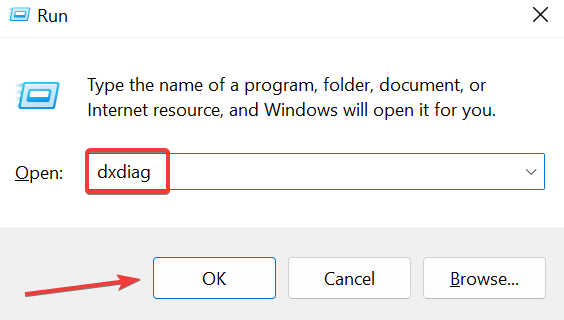
Type “dxdiag” on the Text Box
Step 3. On the DirectX window, click on the Save all information button.
Step 4. Select a folder to save the text file and click OK.
Step 5. Press the Windows logo key + Q and search for Notepad in Cortana.
Step 6. In Notepad, click on File > Open. Then open DxDiag.txt.
Step 7. Now you can know whether it’s available or not.

The DxDiag Document
In the DxDiag document, if Miracast says “Available, with HDCP”, your PC support it. If it’s unavailable, then your PC doesn’t support Miracast. You’ll need a Miracast adapter (sometimes called a dongle) that plugs into an HDMI port.
Method 2. Check and Enable the Wi-Fi Direct Driver
Wi-Fi Direct is the technology used by the wireless display feature on Windows. Verify if the Wi-Fi Direct driver is enabled in your Device Manager settings. Follow these steps:
Step 1. Press Win + X and select Device Manager.
Step 2. Expand the Network adapters section.

Device Manager
Step 3. Locate the Wi-Fi Direct driver and ensure it is enabled. If not, right-click on the driver and select Enable.
Step 4. Restart your PC and try connecting to the wireless display again.
Method 3. Allow the Wireless Display Feature through Windows Defender Firewall
Sometimes, the Windows Defender Firewall may block the wireless display feature from connecting to the internet. You can follow the steps below to resolve the problem “connect to a wireless display not showing”:
Step 1. Open the Windows Defender Firewall settings.
Step 2. Navigate to Allowed apps through the Windows Defender Firewall option.
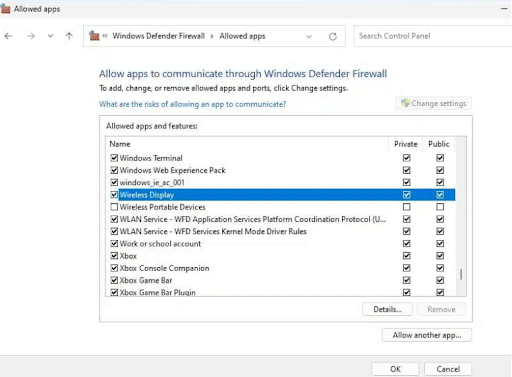
Allowed Apps
Step 3. Ensure that the Wireless Display feature is checked and allowed to access both private and public networks.
Step 4. Save the changes and restart your PC. Check if your issue has been resolved.
Method 4. Connect to the Same Wi-Fi Network
To establish a wireless connection and enable the wireless display feature, both your devices need to be connected to the same Wi-Fi network.
Step 1. Confirm the Wi-Fi name on your extended display by accessing the network settings on the device.
Step 2. On your Windows 10 computer, open the network icon to check the available Wi-Fi networks.
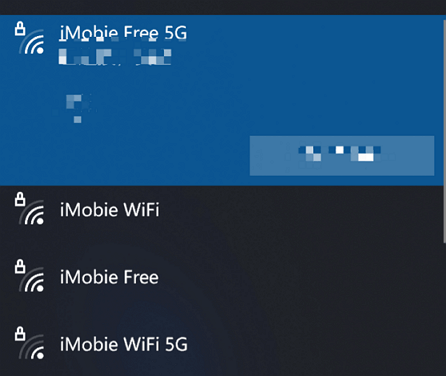
Connect to the Same WiFi Network
Step 3. Ensure that the Wi-Fi network on your extended display and your computer are identical.
Method 5. Update or Reinstall Wi-Fi Direct Virtual Adapter Driver
The Wi-Fi adapter driver is also an important factor that causes the connection to a wireless display not showing. You may upgrade or reinstall the Wi-Fi adapter driver by the following methods:
Step 1. Press Win + R to open Run.
Step 2. Type devmgmt.msc and click OK to open Device Manager.
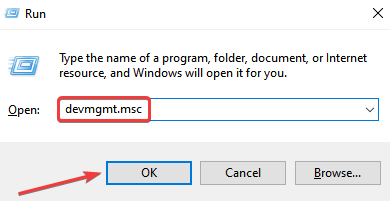
Type “devmgmt.msc” on the text box
Step 3. Expand the Network adapters section.
Step 4. Right-click on the wireless network adapter and select Update driver.
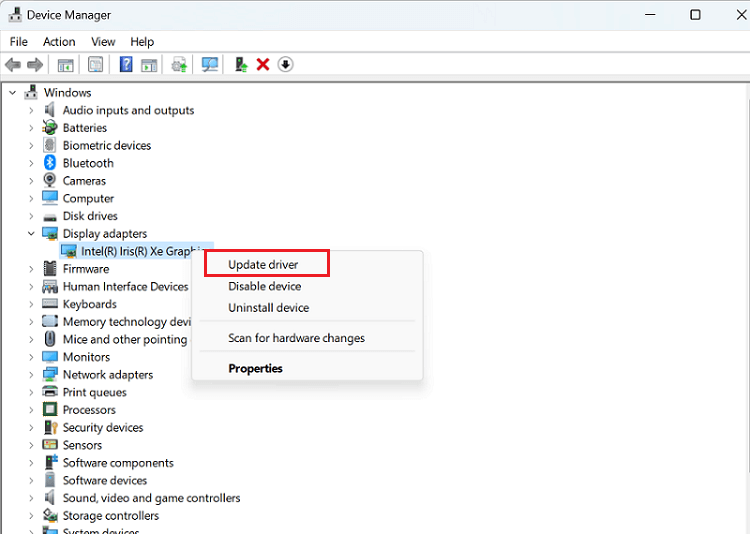
Click Update Driver
Step 5. If no update is available, you can try uninstalling the driver by selecting Uninstall device. Then restart your PC, and the driver will automatically reinstall.
After updating or reinstalling the driver, attempt to connect to the wireless display.
Method 6. Use A Third-Party Wireless Display Alternative – AnyMiro
Miracast is a projection tool that comes with Windows computers. However, users may encounter an issue where the wireless display is not showing while using this app.
In this case, we recommend using a third-party screen mirroring tool – AnyMiro – to achieve projection without facing compatibility issues.
AnyMiro is a reliable and user-friendly screen mirroring tool that supports mirroring your Android and iOS devices to PC/Mac through Wi-Fi or USB without any lag or delay. It is popular with many users by its powerful features.
Key Features of AnyMiro:
- Smooth and Stable Connection
AnyMiro ensures stable and lag-free screen mirroring, providing a seamless connection between your Phone and PC. You can achieve up to 10 hours of mirroring without hassle.
- High-Quality Visuals
You may enjoy a true-to-life and exceptional screen mirroring experience.
- 4K Resolution with Color Accuracy
It supports up to 4K resolution, as vibrant as your original screen, which delivers the best color accuracy for an immersive visual experience.
- Easy to Use
You will find it super easy to mirror a phone screen to PC using AnyMiro.
Step-by-Step Guide
There are two methods of casting the screen using AnyMiro – a USB connection and a Wi-Fi connection. Let’s see how it works.
Mirror Android to PC via USB
*With this method you need to download both the AnyMiro software and the mobile app.
Step 1. Download to get the AnyMiro desktop version, and enter the Android mirroring path.
Free Download for all windows & 100% safe Free Download for all mac & 100% safe
Free Download100% Clean & Safe
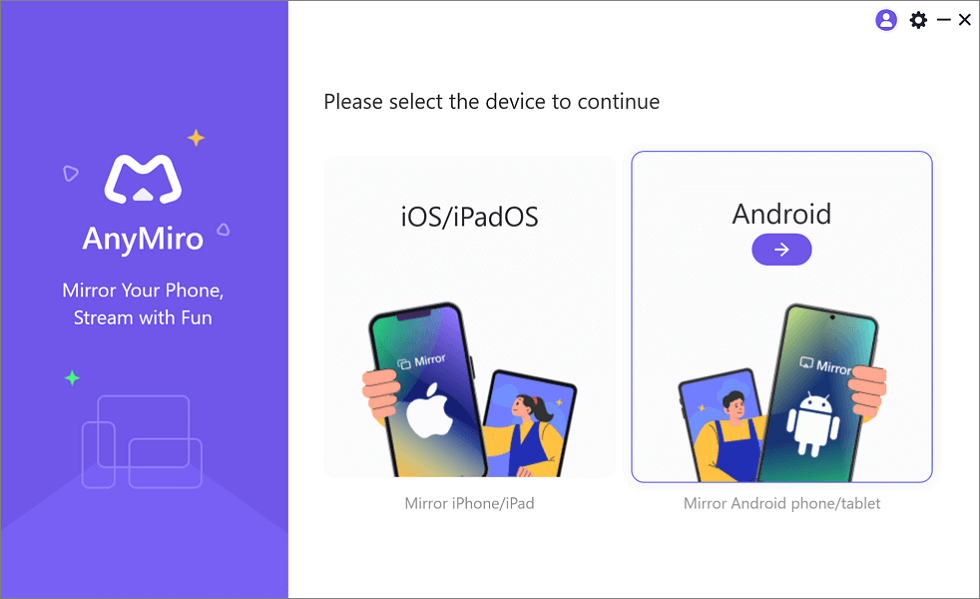
Mirror Android to Computer
Step 2. Enable USB debugging of your Android phone. If you don’t know how to do it, there is a guide inside AnyMiro tells you how.
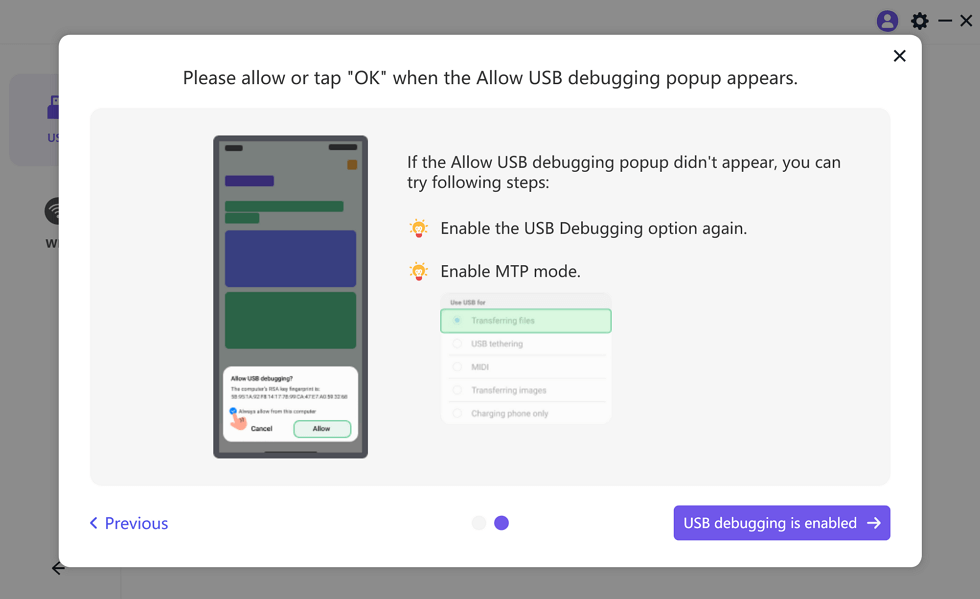
Enable USB Debugging and MTP Mode for a USB Connection
Step 3. Then open the AnyMiro app on your phone, tap Start in USB connection, and wait a few seconds, you can see your Android screen on your PC.
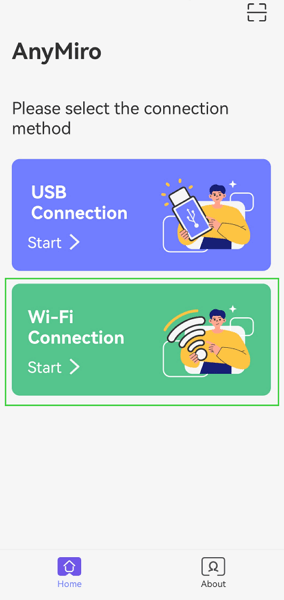
Select the Connection Method
Mirror Android to PC wirelessly
*You need to download both the desktop and mobile apps of AnyMiro in this method.
Step 1. Get AnyMiro on your computer, and enter Android mirroring.

Mirror Android to Computer
Step 2. Connect your Android and computer to the same WiFi, then download AnyMiro app on your Android phone.
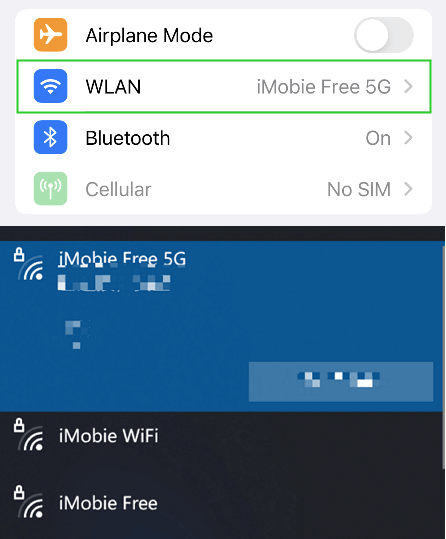
Connect to the Same WiFi
Step 3. Open AnyMiro app, and tap the WiFi connection to search your computer.
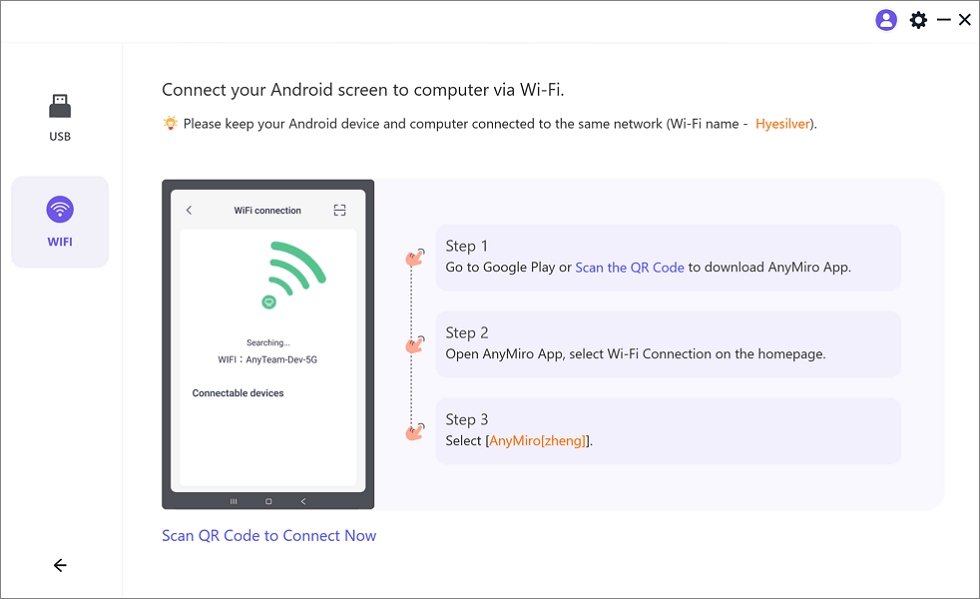
Mirror Android to Computer via WiFi
Step 4. Select your computer’s name, and a few seconds later the Android screen will be mirrored to your computer’s screen.

Mobile Screen Mirrored on the Computer with AnyMiro
FAQs
1. How do I turn on Wireless Display on Miracast?
To use Miracast on Android, go to Settings > Display > Cast Screen or Wireless Display. Select your Miracast-enabled display device from the list of available devices, and follow the on-screen instructions to complete the connection.
2. Does Miracast need Wi-Fi or Bluetooth?
Windows Miracast uses WiFi Direct. Bluetooth isn’t fast enough.
With Miracast you can watch your content where you want. It works by sending content through Wi-Fi Direct, an innovation intended for direct communication between devices, and performs the exchange at a higher speed than Bluetooth.
3. Can I cast without Miracast?
Yes, you can cast your screen from your Windows PC to another display without Miracast by using third-party mirroring apps like AnyMiro. AnyMiro is a reliable mirroring app that allows you to effortlessly mirror your iPhone screen to your PC using either a USB or WiFi connection. It offers a user-friendly interface and seamless connectivity, ensuring a smooth and immersive mirroring experience.
Conclusion
Connecting to a wireless display can greatly enhance your productivity and multimedia experience. However, if you encounter the issue of a wireless display not showing, you can follow these troubleshooting steps to resolve it. Ensure compatibility and Miracast support, check the Wi-Fi network connection, allow the wireless display feature through Windows Defender Firewall, check and enable/update the Wi-Fi Direct driver, and use a third-party mirroring app such as AnyMiro. By following these steps, you should be able to connect to a wireless display successfully and enjoy your content on a larger screen.
AnyMiro – Real-Time Screen Mirroring Tool
Free download AnyMiro to enjoy a fast, stable, and smooth screen mirroring experience. You can mirror for better game playing, video watching, or live streaming mobile phone content.
Product-related questions? Contact Our Support Team to Get Quick Solution >

